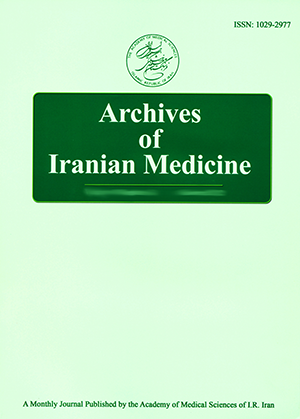The PERSIAN Cohort: Providing the Evidence Needed for Healthcare Reform
Authors
Affiliations
1Digestive Disease Research Center, Digestive Diseases Research Institute, Tehran University of Medical Sciences, Tehran, Iran.
2Liver and Pancreatobiliary Research Center, Digestive Diseases Research Institute, Tehran University of Medical Sciences, Tehran, Iran.
3Liver and Gastrointestinal Diseases Research Center, Tabriz University of Medical Sciences, Tabriz, Iran.
4Gastrointestinal and Liver Diseases Research Center, Razi Hospital, Guilan University of Medical Sciences, Rasht, Iran.
5Research Center for Environmental Determinants of Health, School of Public Health, Kermanshah University of Medical Sciences, Kermanshah, Iran.
6Noncommunicable Diseases Research Center, Fasa University of Medical Sciences, Fasa, Iran.
7Department of Occupational Health, School of Public Health, Shahid Sadoughi University of Medical Sciences, Yazd, Iran.
8Health Promotion Research Center, Zahedan University of Medical Sciences, Zahedan, Iran.
9Health Sciences Research Center, Addiction Institute, Mazandaran University of Medical Science, Sari, Iran.
10Department of Cardiology, Rafsanjan University of Medical Sciences, Rafsanjan, Iran.
11Department of Epidemiology, School of Health, Shiraz University of Medical Sciences, Shiraz, Iran.
12Research Center for Infectious Diseases of Digestive System, Department of Biostatistics and Epidemiology, School of Public Health, Ahvaz Jundishapur University of Medical Sciences, Ahvaz, Iran.
13Health Research Center, Shahrekord University Medical of Sciences, Shahrekord, Iran.
14Molecular Medicine Research Center, Hormozgan University of Medical Sciences, Bandar Abbas, Iran.
15Social Determinants of Health Research Center, occupational Medicine Center, Urmia University of Medical Sciences, Urmia, Iran.
16Digestive Diseases Research Center, Ardabil University of Medical Sciences, Ardabil, Iran.
17Digestive Oncology Research Center, Digestive Diseases Research Institute, Tehran University of Medical Sciences, Tehran, Iran.
18Iranian National Center for Addiction Studies, Tehran University of Medical Sciences, Tehran, Iran.
19Semnan Birth Cohort, Semnan University of Medical Sciences, Semnan, Iran.
20Department of Basic Medical Sciences, Neyshabur University of Medical Sciences, Neyshabur, Iran.
21Eye Research Center, Farabi Eye Hospital, Tehran University of Medical Sciences, Tehran, Iran.
Abstract
In the past, communicable diseases caused the highest mortality in Iran. Improvements in socioeconomic status and living standards including access to safe drinking water, along with the inception of Health Houses in the 1980s, have changed disease patterns, decreasing the spread of and deaths from infectious and communicable diseases. The incidence and prevalence of non-communicable diseases (NCD), however, have now increased in Iran, accounting for nearly 80% of deaths and disabilities. Without interventions, NCD are predicted to impose a substantial human and economic burden in the next 2 decades. However, Iran’s health system is not equipped with the necessary policies to combat this growth and must refocus and reform. Therefore, in the year 2013, the Ministry of Health and Medical Education funded a well-designed nationwide cohort study-Prospective Epidemiological Research Studies in IrAN (PERSIAN)-in order to assess the burden of NCD and investigate the risk factors associated with them in the different ethnicities and geographical areas of Iran. The PERSIAN Cohort, which aims to include 200000 participants, has 4 components: Adult (main), Birth, Youth and Elderly, which are being carried out in 22 different regions of Iran. Having an enormous dataset along with a biobank of blood, urine, hair and nail samples, the PERSIAN Cohort will serve as an important infrastructure for future implementation research and will provide the evidence needed for new healthcare policies in order to better control, manage and prevent NCD.
Keywords:Cohort; Iran; NCD; PERSIAN

